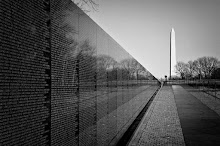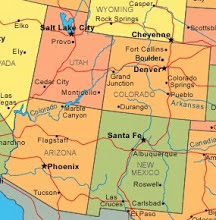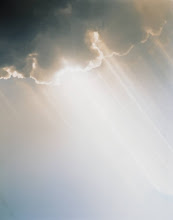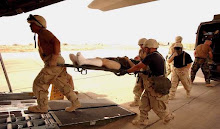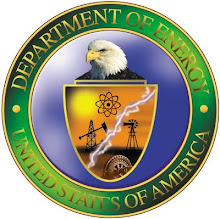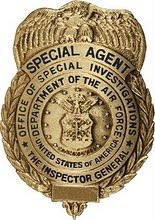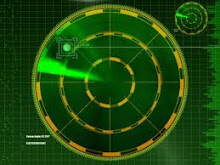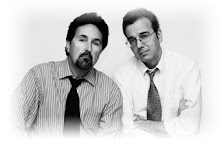By Steve Hammons
As part of efforts to invigorate our country and help younger Americans find ways to contribute to society, several ideas have been floated about some kind of youth corps or programs.
I explored this idea in my two novels, both published in 2001, "Mission Into Light" and the sequel "Light’s Hand."
In the novels, a small special research and operational team called the Joint Reconnaissance Study Group (JRSG), based in San Diego, is tasked with several projects. Some are innovative, some unconventional and others quite surprising.
In my novels, a team leader and Marine colonel named Gene Voss briefs the group on a pilot project involving American youth. He responds to a question from the commanding officer of the JRSG, Air Force Col. Tom O’Brien.
“Well, sir, we’ll also continue working in the human area. We have been recruited for a project involving another federal agency that ties in with what we’ve been doing with the Marine Pups youth program.”
“The agency whose request has come to us is the Federal Emergency Management Agency, FEMA. The big earthquakes recently apparently triggered a plan that they had been considering.”
“Here’s where it ties in with the Marine Pups program we have been somewhat involved with: FEMA wants to start a youth auxiliary or reserve group across the country that can be trained in first-aid, CPR and some basic emergency procedures,” Voss explains.
“FEMA knows that in the event of catastrophic earthquakes or other national emergencies, local police and fire departments, even assisted by the National Guard, may not be adequate to handle all the casualties and problems.”
“FEMA thinks a youth corps of some kind, maybe trained by local firefighters, needs to be formed. The Marine Pups is one model of a youth program that is being looked at.”
“When all of us in the group took those trips to Camp Pendleton to observe and work out with the teenagers in the Marine Pups, I believe we saw a model for a way to provide a positive experience for these youngsters. In fact, it rubbed off on all of us when we started our own physical fitness program.”
“There are a lot of mixed-up kids out there. Adults too, for that matter. This program builds self-esteem. Gets these youngsters on the right track.”
“We get involved with these kids and put back a little into the next generation. I think it’ll help us keep our feet on the ground.”
O’Brien follows up with a question.
“Have they given this program a name yet?”
“Sir, the name we’ve heard used most frequently, as this thing has evolved, is ‘Urgent Response Group’ or something similar.”
“Urgent Response Group. I like it,” O’Brien replies. “Good bunch of kids to have around when you need them, right?”
“We hope so sir.”
TRAINING AND OPERATIONAL READINESS
Voss explained it. “The JRSG has been asked to contribute some of the training concepts for this youth corps. The branches and agencies involved, on the local, state, and federal level have agreed to get this thing operational ASAP. There’s, well, some urgency to get it going. The program has been streamlined.”
“The kit to be distributed is now for four weeks of training a few hours a week. As planned, the program can be instructed by teachers, firefighters, cops, youth leaders, churches, National Guard and reserve units, and others. The program kits are being distributed nationwide as we speak.”
“The training is fairly straightforward. It’s for ages thirteen to nineteen. There is also a plan to increase the scope and strength of that corps by expanding it to include college students, increasing the capability of this group."
"Training includes basic first-aid, CPR, assisting fire and police, basic safety, physical fitness, self-defense. In some areas, they would specialize. In some places, the training would include earthquake issues. In California and the West, wildland firefighting too. In Oklahoma and the Midwest, tornadoes. River country and coastal regions, flooding.”
“After the four weeks, they get their navy and gold ‘Urgent Response Group’ uniform shirt and a photo ID badge. We’ll issue each of them a military web belt with a canteen, a first-aid kit, and a police-type flashlight."
"They stay linked-up with their adult instructors and their training group. And we have a database and a line of communication with them. That’s about it. It’s moving right along. We hope to have the first graduates in six weeks to two months.”
O’Brien was looking at this idea in a whole new light now. Natural disasters, terrorist threats, and now possible big Earth changes. This youth network could help in a big way.
Weeks later, the Urgent Response Group is up and running across the U.S. Members of the JRSG, including Col. Voss, are present at the northwest San Diego neighborhood of Mira Mesa where a meeting of regional teams of the organization and their adult instructors are training.
At the Mira Mesa Community College athletic field, nearly five hundred teenagers and young college students are undergoing specific training courses under the guidance of public safety and Navy personnel.
The young women and men were all in their uniform of blue jeans and the navy blue T-shirts with “Urgent Response Group” emblazoned in bold yellow letters on the front and back. They all wore military web belts with a canteen, first-aid kit and large police-type flashlights attached.
Some were being instructed by San Diego area firefighter-paramedics and Navy corpsmen in first-aid, CPR, and rescue procedures. The firefighters also were giving a short class on various urban survival skills. How to turn off residential natural gas lines. And how to deal with fires before firefighters show up.
Other groups were learning self-defense from local peace officers as well as how to safely subdue and restrain a criminal suspect or out-of-control person. The cops also taught them how to direct traffic if power to traffic lights went out.
Col. Voss was thoroughly impressed. He and Air Force Major Karen Valdez knew that training just like this was now taking place all over the country. The Urgent Response Group was up and running in a big way nationwide.
These trained young people had proved to be a tremendous national and international asset. URG members in northern California had recently been deployed to help public safety personnel after a serious earthquake there.
The group’s readiness for many situations had contributed to peace of mind across the country, as well as bringing America’s youth firmly into a new way of looking at themselves.
TRANSCENDENT CONNECTIONS
When Voss briefed the JRSG members, he noted that there could be more to the URG organization than just emergency preparedness and conventional human development training.
“The other part of this is more of the bigger picture. Some of the things we’ve done here at the JRSG point to our evolution as individuals and as a ready operational group.”
“Some of Team One’s work with the Navy dolphins has ramifications of species evolution, and how the human species has evolved and is continuing to evolve,” Voss pointed out.
“As you remember, one of the speakers up at the Four Corners meeting, the doctor, talked about the continuing evolution of the human brain and neurological system. And, I think we’re also operating under the premise that there is a fundamental spiritual evolution going on that is somewhat concrete.”
Voss addressed the whole JRSG team. “Let me ask you, how are we helping Americans, American human beings, our citizens, make the most of themselves and grow to be the best, healthiest and most advanced beings they can be? In the Marine Corps this is a fundamental mission.”
“For our own group, the five-mile runs we were taking, the gym work with resistance weight training, and the different kinds of physical therapies and mental work all have helped our readiness and personal intelligence, helped us deal with our duties.”
“We have fine-tuned our bodies and minds as crucial instruments in our mission. I would venture to say this has helped us in our operations and our successes thus far.”
“I think the FEMA proposal is a vehicle to get some of our youth on a similar track of self-betterment, and being part of a team that is competent to pitch in and help if needed.”
“Major Valdez and our intelligence analyst Jennifer here have some real good ideas for coaching and building up the girls and young women out there. We want to integrate the female population fully in this project.”
As the JRSG members sat around the conference table, they knew that Voss was right about how people can benefit and grow at all levels from the right training.
On the physical fitness level, all of them had lost fat, gained muscle and improved their jogging intensity and distances from their physical workout efforts. And their fitness had affected their internal consciousness too. Their physical fitness had affected their minds and spirits. They were more confident in what they could achieve.
skip to main |
skip to sidebar

In the past 30 days, readers from approximately 40 countries or territories using about 20 languages visited the Joint Recon Study Group site.

To see more articles, scroll down the right-side column.

Steve Hammons

Articles from the Joint Recon Study Group site and Transcendent TV & Media site are included.
The Joint Reconnaissance Study Group is the San Diego-based, combined-service/agency, research-and-activities team in my novels "Mission Into Light" and sequel "Light's Hand." This site contains information of interest to the JRSG.
Home page: Joint Recon Study Group site
Readers from around the world visit this site.

In the past 30 days, readers from approximately 40 countries or territories using about 20 languages visited the Joint Recon Study Group site.
April 2021 threat alert: ‘Force protection’ for our troops now the responsibility of all Americans
First responders must deal with society’s problems, shortcomings, injustices every day
Could some UFOs be linked to Native American 'white stone canoe' legends, stories?
Wildland firefighter basic training available at community colleges, tech schools, training centers
‘Boomer remover’ coronavirus is bigger threat to WWII generation that saved the world
‘Black swan’ events that aren’t: Coronavirus, climate emergency, unidentified aerial phenonema
Reagan’s complete 1987 UN message on ‘alien threat’ overlooked: Grave danger here, now
Was Reagan briefed about UFOs and original ‘Day the Earth Stood Still’ movie?
My military draft lottery number was #165 during final Vietnam War years
“Keep On The Sunny Side,” by The Whites, from movie O Brother, Where Art Thou?”
Living along Ohio River for centuries, Native Shawnee called it ‘Kiskepila Sepe’ – ‘Eagle River’
Native American words around us: States, towns, rivers, lakes, terrain, plants, animals, military
Athens County, Ohio, was key spot when colonists, Redcoats fought Shawnee in 1774 battle
1787 Northwest Ordinance set course for Ohio, Indiana, Illinois, Michigan, Wisconsin, Minnesota
Smallpox-tainted blankets were 1763 bioweapon on northern Appalachian Mountains frontier
Diana Krall performs “Maybe You’ll Be There" live in Paris with Paris Symphony Orchestra 2001.
Books to read in 2021? Novels "Mission Into Light" and the sequel "Light's Hand"
Novel excerpt: Renew, prepare America with ‘Urgent Response Group’ for teens, young adults
Diana Krall performs “I Get Along” live in Paris with Paris Symphony Orchestra 2001.
Steve Tyrell sings “Give Me the Simple Life.”
Diana Krall performs “Love Letters” live in Paris with Paris Symphony Orchestra 2001.
Visit the article archives!

To see more articles, scroll down the right-side column.
Novel "Mission Into Light" overview on Amazon
Novel "Light's Hand" overview on Amazon
Adventures of the Joint Recon Study Group: Overview and synopses of activities and operations
Key chapter overviews: Points of interest in the novel "Mission Into Light"
Key chapter overviews: Points of interest in the novel "Light's Hand"
Multimedia rights available
English and foreign-language book rights, audio book and e-book rights for "Mission Into Light" and "Light's Hand" are available. Movie and TV rights are available.
I'm seeking agent representation for these works and rights.
Please contact Steve Hammons for more information at hammons55@gmail.com.
Feature film screenplay
I completed a feature film screenplay in 2006 based on “Mission Into Light” and “Light’s Hand” combining key elements of both novels.
The screenplay takes audiences into the adventures and discoveries of the Joint Recon Study Group and the relationships among team members, friends and associates as they explore leading-edge research and emerging transcendent developments.
I'm seeking agent representation for this screenplay.
.........................
I also wrote a TV series pilot script based on "Mission Into Light" and "Light's Hand" story. I'm seeking agent representation this script.
About the Author

Steve Hammons
About the Author
I was born and raised in southwestern Ohio near the Kentucky and Indiana borders, then went to college at Ohio University in the southeastern Appalachian region of the state near West Virginia.
I graduated with a dual major in communication (journalism focus) and health education (psychology focus) with a minor in pre-law.
Ohio U. is home to the respected Scripps College of Communication and E.W. Scripps School of Journalism.
I also completed two graduate-level courses in guidance counseling theory and method at Ohio U.'s College of Education, School of Applied Behavioral Sciences and Educational Leadership.
At the end of my undergraduate education at Ohio University, I moved to the beautiful American Southwest where I applied my education, continual training and and ongoing experience to related professional fields such as health care, journalism and special research areas.
My novels "Mission Into Light" and the sequel "Light’s Hand" are available in e-book and 6"x9" paperback from most online booksellers worldwide.
Readers review metaphysical-military-intelligence adventure novel ‘Mission Into Light’
My articles on DoD CultureReady blog, Defense Language and National Security Education Office
Transcendent TV & Media site
Past articles: Scroll down the right-side column for more articles.

Articles from the Joint Recon Study Group site and Transcendent TV & Media site are included.











